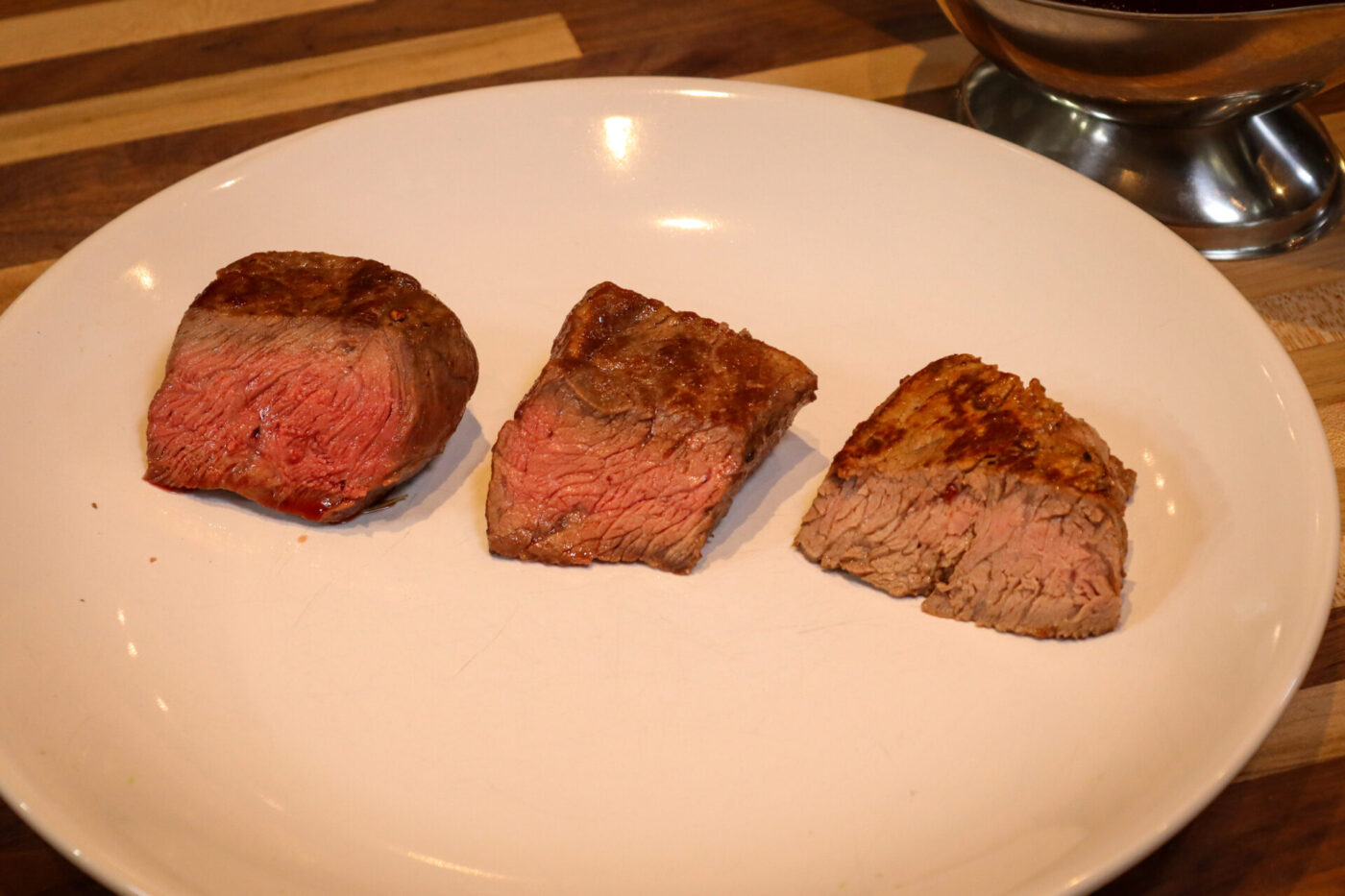See minimum recommended safe internal temperatures recommended by the USDA as well as other common and popular internal temperatures:
Beef, Lamb, Venison (steaks, chops, roast)
The USDA minimum safe internal temperature is 145°F.
Popular serving temperatures:
110 – 120°F – Blue
120 – 130°F – Rare
130 – 135°F – Medium Rare (most popular, especially by chefs)
135 – 145°F – Medium
145 – 155°F – Medium Well
155°F and more – Well Done
Pork and Veal (steaks, chops, roast)
The USDA minimum safe internal temperature is 145°F.
Popular serving temperatures:
120 – 130°F – Rare
130 – 135°F – Medium Rare
135 – 145°F – Medium (most popular, especially by chefs)
145 – 155°F – Medium Well
155°F and more – Well Done
Ground Beef Burger Meat
The USDA minimum safe internal temperature is 160°F.
Popular serving temperatures:
120 – 130°F – Rare
130 – 140°F – Medium Rare
140 – 150°F – Medium (most popular, especially by chefs)
150 – 160°F – Medium Well
160°F and more – Well Done
Ground Meat other burgers (sausages, meatloaf, with the exception of poultry]
The USDA minimum safe internal temperature is 160°F.
The popular serving temperature is the same as the minimum serving temperature.
Poultry
The USDA minimum safe internal temperature is 165°F.
The popular serving temperature is the same as the minimum serving temperature.
Fish
The USDA minimum safe internal temperature is 145°F.
Popular serving temperatures:
110 – 125°F – Rare
125 – 140°F – Medium Fair
145 – 155°F – Medium
Shellfish
The USDA minimum safe internal temperature is 145°F.
The popular serving temperature is the same as the minimum serving temperature.


Comments